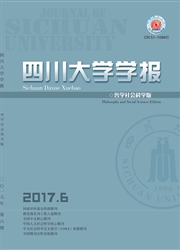

 中文摘要:
中文摘要:
在符号学研究领域,有观点认为,在现代艺术等文化性符号文本中,符号表意有可能“越过对象而直接指向解释项”。这种观点常被用以描述艺术史近百年来表现形式的内在发展逻辑。从皮尔斯“动力对象”与“直接对象”的角色分工来看,引发表意过程的“原物”作为“直接对象”的隐退正是“动力对象”凸显的重要机制。对象并未被越过而是被再分解了。在艺术表意中,从笼统的所指到对象物的多重分解、敞开,乃是艺术表意与解释双重实践的深入过程。
 英文摘要:
英文摘要:
It is generally accepted in semiotics that in culture text, especially in texts of modern art, signs can generate interpretents without referring to an object. Such an argument has been used to describe the developmental logic of western art history in the past one hundred years. In Peircean semiotic system, there are two kinds of objects: immediate object and dynamic object. From this perspective, the absence of immediate object could be taken as the cause of the presence of dynamic object. Thus, the object as a whole is omitted: it is deconstructed. In art semiosis, object is no longer taken as a unity; instead, it is deconstructed and becomes open to multiple interpretations. The openness of original things and multi- deconsctruction of object are under the mechanism of art signification and interoretation, namely, art semiosis.
 同期刊论文项目
同期刊论文项目
 同项目期刊论文
同项目期刊论文
 期刊信息
期刊信息
